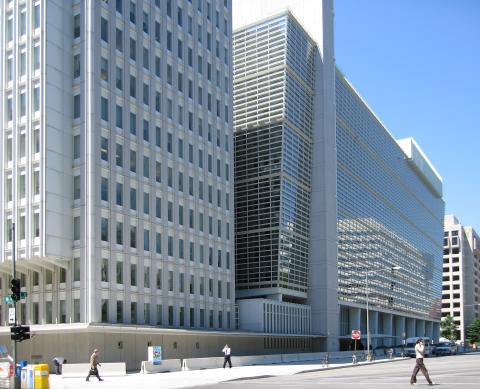The Anti-Growth Traps: What Prevents Countries from Progressing?
The Anti-Growth Traps: What Prevents Countries from Progressing?

Many middle-income nations are struggling to move from poverty to prosperity, and the World Bank suggests that a stagnant status quo is partly to blame.
A recent World Bank report reveals that more than 100 countries could face significant obstacles on their journey from low-income to high-income status in the coming decades. The report highlights that as countries become wealthier, their economic growth often hits a plateau, which typically hovers around 10% of the annual US GDP per capita. This phenomenon, referred to by the World Bank as the "middle-income trap," represents a significant challenge for many nations.
As of the end of 2023, there were 108 countries classified as middle-income, with annual GDP per capita ranging from $1,136 (€1,348.5) to $13,845 (€16,434.7). "The goal of these 108 middle-income countries is to achieve high-income status within the next two to three decades," stated the World Bank report. However, since 1990, only 34 middle-income countries have successfully made this transition, a rate the World Bank deems "dismal." Moreover, economic growth slowdowns are more common in middle-income countries compared to those that are low- or high-income. The World Bank estimates that, following current investment trends, most middle-income countries will likely face significant growth slowdowns between 2024 and 2100.
Escaping the Income Trap
One reason nations struggle to break out of this plateau is that their growth policies may not be effectively designed, according to the World Bank. The report recommends a three-pronged strategy for middle-income nations, which includes focusing on domestic investment, "infusion," and innovation.
"Infusion" involves adopting technologies and business models from more developed economies. Once a country has successfully integrated these elements, it can then focus on innovation to push the frontiers of growth further, rather than just replicating existing ideas. The World Bank emphasized the importance of strong institutions in enabling countries to follow this three-step strategy. The report also cautioned against protectionism, which could hinder the spread of knowledge to low- and middle-income countries.
Challenging the Status Quo
"The forces of creative destruction bring new ideas, products, processes, and practices to middle-income economies," the World Bank stated in its report. Although maintaining the status quo isn't always detrimental, an unchanging business environment can stifle innovation and growth. To avoid economic stagnation, the World Bank advises that middle-income countries should prevent established companies from obstructing social mobility, whether by controlling resources or limiting access to opportunities.
"Both existing companies and new entrants can create value," the World Bank noted. "Established firms provide scale, while new entrants bring change," indicating that neither should be overly protected or criticized. While new firms can introduce innovative products, production methods, or ideas, they must also be allowed to fail. "Allowing inefficient firms and business models to fail is a fundamental principle of creative destruction," argues the World Bank.
Investing in Talent
Economic growth requires creativity, talent, and skills, all of which can be cultivated or hindered by effective policy decisions. "Middle-income countries have smaller pools of skilled talent than advanced economies and are less efficient in utilizing them, so they need to improve in both accumulating and allocating talent," the World Bank stated. One approach to enhancing the workforce is by investing in education and ensuring that talented individuals can thrive regardless of their background or gender.
The World Bank also noted that up to 40% of the observed growth in the US between 1960 and 2010 can be attributed to a reduction in gender and racial discrimination in education and employment. Cultivating a talented workforce is increasingly crucial as aging populations, rising debt levels, and the climate crisis pose threats to growth.
The middle-income trap, according to the World Bank, "has implications for the entire world." The report stressed, "Middle-income countries are home to three out of every four people—and nearly two-thirds of those living in extreme poverty." Additionally, these countries are responsible for 40% of the world's total economic output and nearly two-thirds of global carbon emissions. "In short, the global effort to eradicate extreme poverty and promote prosperity and sustainability will largely succeed or fail in these countries."
Article source: https://www.euronews.com/business/2024/08/01/the-anti-growth-traps-what-stops-countries-from-getting-ahead
Photo attribution: Shiny Things, World Bank building at Washington, CC BY 2.0

Το comment on the article or to read all articles, please sign in or sign up